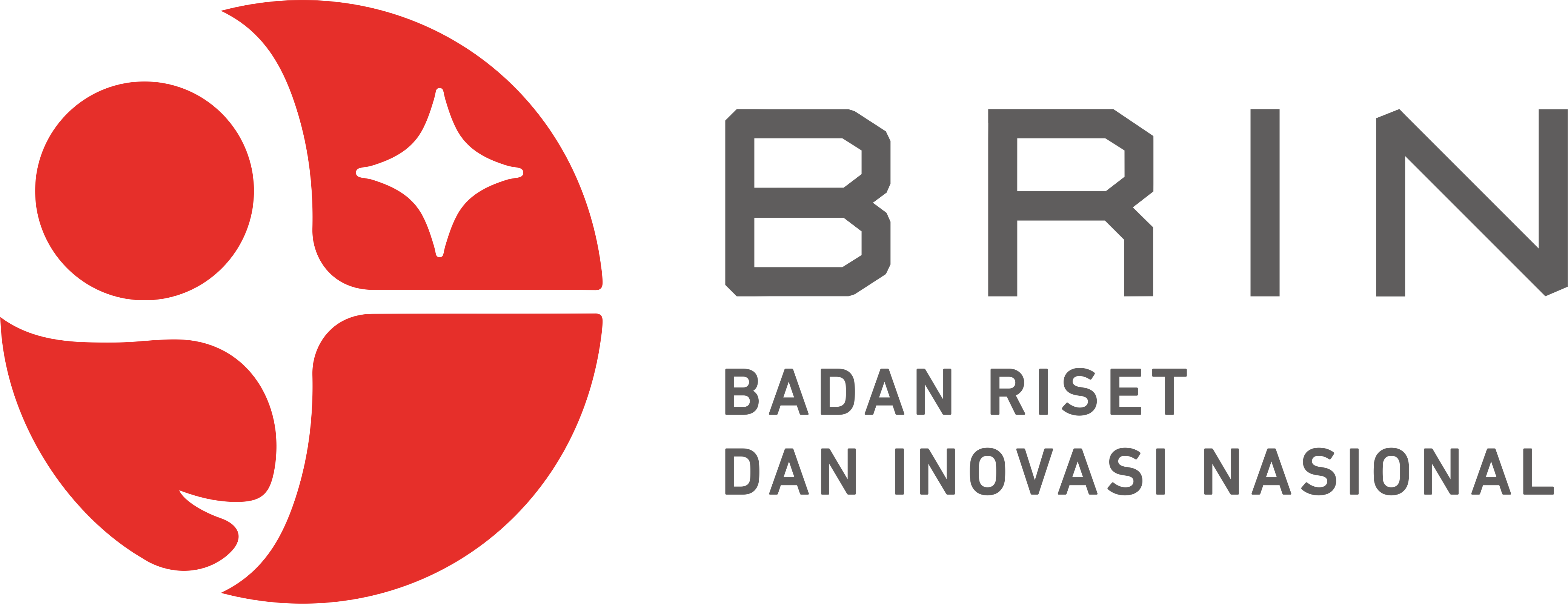Kuantifikasi Populasi Belangkas Sebagai Dasar Strategi Konservasi di Perairan Mauk
DOI:
https://doi.org/10.31629/akuatiklestari.v9i1.7610Keywords:
Carcinoscorpius rotundicauda, Distribusi Populasi, Tachypleus gigasAbstract
Penelitian terkait kuantifikasi terkait distribusi populasi belangkas di Utara Banten masih minim padahal dengan mengetahui spesies, jumlah, ukuran dan jenis kelamin dapat menjadi dasar ilmiah dalam mendukung strategi konservasi belangkas. Tujuan penelitian ini untuk mengetahui kuantifikasi belangkas yang tertangkap di Perairan Mauk, Kabupaten Tangerang, Provinsi Banten. Penelitian ini dilakukan selama Juli-Agustus 2025 dengan mengikuti 15 trip operasional nelayan jaring insang. Data belangkas tertangkap diidentifikasi secara morfologi untuk kemudian dianalisis berdasarkan spesiesnya terhadap ukuran Panjang total, jenis kelamin dan jumlah. Analisis Hasil penelitian diperoleh jumlah belangkas sebanyak 86% spesies Tachypleus gigas dan 14% Carcinoscorpius rotundicauda. Distribusi panjang total T. gigas berkisar antara 14,795–48,045 cm dengan frekuensi individu terbesar pada interval 16,295–33,445 cm sebanyak 27 ekor. Sementara itu, panjang total C. rotundicauda tercatat antara 16,295–33,445 cm, dengan dominasi pada interval 30,015-33,445 cm sebanyak 7 ekor. Rasio perbandingan jantan dan betina diperoleh jenis T. gigas 1:1 dan C. rotundicauda 1:7. Stadia usia jenis T. gigas didominasi oleh Jantan dewasa 46 ekor, sementara betina dewasa 6 ekor dan betina belum dewasa sebanyak 44 ekor. Jenis C. rotundicauda tertangkap diperoleh betina dewasa 13 ekor, Jantan dewasa 2 ekor dan betina belum dewasa sebanyak 2 ekor. Berdasarkan hasil studi diharapkan dapat mendukung perumusan strategi konservasi dan pengelolaan belangkas yang bersinggungan dengan aktivitas penangkapan penangkapan di wilayah pesisir.
References
Anggraini, R., Bengen, D. G., & Natih, N. M. N. (2017). Struktur Populasi dan Morfometri Belangkas Carcinoscorpius rotundicauda, latreille 1802 di Pesisir Kampung Gisi Teluk Bintan Kepulauan Riau. Jurnal Ilmu dan Teknologi Kelautan Tropis, 9(1), 211-220. https://doi.org/10.29244/jitkt.v9i1.17934
Botton, M. L. (2009). The ecological importance of horseshoe crabs in estuarine and coastal ecosystems: A review and speculative summary. Estuaries and Coasts, 32, 39–53. https://doi.org/10.1007/978-0-387-89959-6_3
Cartwright-Taylor, L., Lee, J., & Hsu, C. C. (2009). Population structure and breeding pattern of the mangrove horseshoe crab Carcinoscorpius rotundicauda in Singapore. Aquatic Biology, 8, 61-69. https://doi.org/10.3354/ab00206
Chatterji, A., Vijayakumar, R., & Parulekar, A. H. (1992). Distribution and abundance of horseshoe crabs along the Indian coast. Indian Journal of Marine Sciences, 21(3), 169–171. https://doi.org/10.1007/978-3-319-19542-1_9
Chatterji, A., & Parulekar, A. H. (1992). Mating Behavior and Spawning in the Horseshoe Crab, Tachypleus gigas (Müller). Asian Fisheries Science, 5, 123–128.
Eidman, M., Mayunar, & Redjeki, S. (1997). Pematangan Gonad Mimi Ranti, Carcinoscorpius rotundicauda (Latreille) dan Mimi Bulan Tachypleus gigas (Muller) dengan Berbagai Jenis Pakan. Jurnal Ilmu-Ilmu Perairan dan Perikanan Indonesia, 5(1):1-6. http://dx.doi.org/10.29244/jpsl.10.2.153-162
Hajeb, P. (2005). Reproductive biology of horseshoe Crab (Carcinoscorpius rotundicauda) with emphasis on gonad and Gamete Morphology. [Tesis]. Universiti Putra Malaysia. Malaysia.
Hatta, M., & Setyobudiandi, I. (2016). Biometric characteristics of Tachypleus gigas in Bintan coastal waters, Indonesia. Biodiversitas, 17(1), 100–106.
Irfai, G. M. (1992). Studi kelimpahan, distribusi dan habitat mimi (horseshoe crab) di Perairan Pantai Kabupaten Pasuruan Propinsi Jawa Timur. [Skripsi]. Institut Pertanian Bogor. Bogor.
IUCN [International Union for Conservation of Nature]. (2025). Red List of Threatened Species. Retrieved from: www.iucnredlist.org
John, B. A., Jalal, K. C. A., Kamaruzzaman, B. Y., & Zaleha, K. (2010). Observation on the mating behavior of horseshoe crabs (T. gigas and C. rotundicauda) in Malaysia. Journal of Sustainability Science and Management, 5(1), 1–7. http://dx.doi.org/10.5539/ijb.v4n2p102
John, B. A., Nelson, B. R., Sheikh, H. L., Cheung, S. G., Wardiatno, Y., Dash, B. P., Tsuchiya, K., Iwasaki, Y., & Pati, S. (2018). Fisheries and conservation status of Asian horseshoe crabs: a review. Biodiversity and Conservation, 27, 3573–3598. https://doi.org/10.1007/s10531-018-1633-8
Mashar, A., Butet, N. A., Juliandi, B., Qonita, Y., Hakim, A. A., & Wardianto, Y. (2017). Biodiversity and Distribution of Horseshoe Crabs in Northern Coast of Java and Southern Coast of Madura. Earth and Environmental Science. IOP Conference Series: Earth and Environmental Science, 54, 012076. https://doi.org/10.1088/1755-1315/54/1/012076
Mauludiyah, N. R., Novelia, A., Kautsaranny, S., & Rahya, D. A. (2022). Potensi Mimi Mintuna (Horseshoe crab) Khas Madura sebaga Daya Tarik Wisata Masyarakat Jawa Timur. Jurnal Sains dan Matematika, 7(1), 33-38. https://doi.org/10.26740/sainsmat.v7n1.p33-38
Meilana, L., Wardiatno, Y., Butet, N. A., & Krisanti, M. (2016). Karakter morfologi dan identifikasi molekuler dengan marka gen CO1 pada Mimi (Tachypleus gigas) di Perairan Utara Pulau Jawa. Jurnal Ilmu dan Teknologi Kelautan Tropis, 8(1), 145-158. https://doi.org/10.28930/jitkt.v8i1.12651
Millah, M. Z. (2018). Analisis Morfologi Famili Limulidae di Perairan Pantai Utara Jawa Timur. [Skripsi]. Universitas Islam Negeri Surabaya. Surabaya.
Mishra, J. K., Ghosh, S., Chatterji, A., & Parida, S. P. (2011). Status and conservation of the horseshoe crab in India: A review. Biodiversity and Conservation, 20, 1955–1973. https://doi.org/10.1007/978-0-387-89959-6_5
Morton, B., & Lee, C. N. (2011). Spatial and temporal distributions of juvenile Carcinoscorpius rotundicauda in Hong Kong mangroves. Hydrobiologia, 678, 71–79. https://doi.org/10.1080/00222933.2010.522263
Mulya, M.B. (2004). Pelestarian pemanfaatan sumberdaya genetika Mimi Ranti (Carcinosscorpius rotundicauda L) dan Mimi Bulan (M). [Skripsi]. Universitas Sumatera Utara. Medan.
Rubiyanto, E. (2012). Studi Populasi Mimi (Xiphosura) di perairan Kuala Tungkal, Kabupaten Tanjung Jabung Barat, Jambi. [Skripsi]. Universitas Indonesia. Depok.
Sekiguchi, K. (1988). Biology of Horseshoe Crabs. Science House. Tokyo
Sekiguchi, K., & Shuster, C. N. (2009). Limits on the Global Distribution of Horseshoe Crabs (Limulacea): Lessons Learned from Two Lifetimes of Observations: Asia and America. In: Tanacredi, J., Botton, M., Smith, D. (eds) Biology and Conservation of Horseshoe Crabs. Springer, Boston, MA. https://doi.org/10.1007/978-0-387-89959-6_1
Shuster, C. N., & Sekiguchi, K. (2003). The American Horseshoe Crab. Harvard University Press.
Smith, D. R. (2007). Effect of horseshoe crab spawning density on nest disturbance and exhumation of eggs: A simulation study. Estuarine, 30, 287-295. https://doi.org/10.1007/BF02700171
Smith, D. R., Brockmann, H. J., Beekey, M. A., Timothy, L. K., Michael, J., Millard, ZaldivarRae, J. (2016). Conservation status of the American horseshoe crab, (Limulus polyphemus): a regional assessment. Reviews in Fish Biology and Fisheries, 27, 135–175. https://doi.org/10.1007/s11160-016-9461-y
Srijayat, T. C., Pradeep, P. J., Hassan, A., Chatterji, A., Shaharom, F., & Jeffs, A. (2014). Colour preference and light sensitivity in trilobite larvae of mangrove horseshoe crab, Carcinoscopius rotundicauda (Latreille, 1802). Indian Journal of Experimental Biology, 52(3), 281–290.
Sudjana, N. (2005). Metode Statistika. Tarsito. Bandung.
Supadminingsih, F. N., Wahju, R. I., & Riyanto, M. (2019). Composition of blue swimming crab Portunus pelagicus and horseshoe crab Limulidae on the gillnet fishery in Mayangan Waters, Subang, West Java. AACL Bioflux, 12(1), 14-24.
Supadminingsih, F. N., Susanto, A., Santoso, P., Rachmanto, F., & Saputra, J. (2025). Exploring Local Knowledge Information of Horseshoe Crabs in Banten. Journal of Marinesia, 2(1), 8-16.
Tan, A. N. A., Christanus, S., Shakibazadeh, P., & Hajeb. (2012). Horseshoe Crab, Tachypleus gigas (Müller, 1785) Spawning Population at Balok Beach, Kuantan, Pahang, Malaysia. Pakistan Journal of Biological Sciences, 15,(13), 610-620. https://doi.org/10.3923/pjbs.2012.610.620
Walpole, R. E. (2012). Pengantar Statistika. PT Gramedia. Jakarta.
Wang, C. Chieh., Kwan, K. Y., Shin, P. K. S., Cheung, S. G., Itaya, S., Iwasaki, Y., Cai, l., Mohamad, F., Fozi, N. F., Zauki, M. A. M., Jawahir, N. A., Raman; Chatterji A., Tripathy, B., Sajan, S., Min, W. W., Tan, L. J. X., Supadminingsih, F. N., Wardiatno, Y., & Hsieh, H. L. (2020).Future of Asian horseshoe crab conservation under explicit baseline gaps: A global perspective. Global Ecology and Conservation, 24, e01373. https://doi.org/10.1016/j.gecco.2020.e01373
Zaleha, K., John, B., Atika, H., Kamruzzaman, B., & Jalal, K. (2012). Spawning and Nesting Behaviour of Tachypleus gigas along the East Coast of Peninsular Malaysi. International Journal of Biology, 4(2), 102-111. https://doi.org/10.5539/ijb.v4n2p102
Downloads
Published
Issue
Section
License
Copyright (c) 2025 Fahresa Nugraheni Supadminingsih, Ginanjar Pratama, Nico Wantona Prabowo, Rini Yanuarti, Hery Sutrawan Nurdin

This work is licensed under a Creative Commons Attribution-NonCommercial-ShareAlike 4.0 International License.








